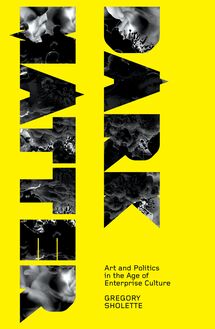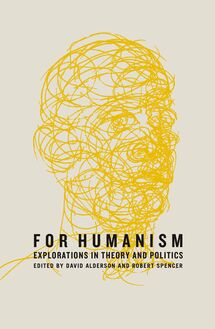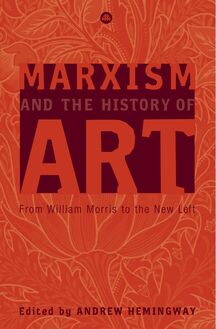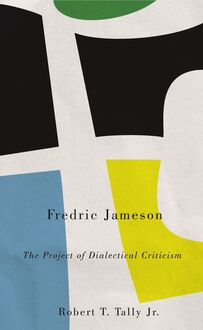-
 Univers
Univers
-
 Ebooks
Ebooks
-
 Livres audio
Livres audio
-
 Presse
Presse
-
 Podcasts
Podcasts
-
 BD
BD
-
 Documents
Documents
-
- Cours
- Révisions
- Ressources pédagogiques
- Sciences de l’éducation
- Manuels scolaires
- Langues
- Travaux de classe
- Annales de BEP
- Etudes supérieures
- Maternelle et primaire
- Fiches de lecture
- Orientation scolaire
- Méthodologie
- Corrigés de devoir
- Annales d’examens et concours
- Annales du bac
- Annales du brevet
- Rapports de stage
La lecture à portée de main
Vous pourrez modifier la taille du texte de cet ouvrage
Découvre YouScribe en t'inscrivant gratuitement
Je m'inscrisDécouvre YouScribe en t'inscrivant gratuitement
Je m'inscrisEn savoir plus
Vous pourrez modifier la taille du texte de cet ouvrage
En savoir plus

Description
Gregory Sholette, a politically engaged artist, argues that imagination and creativity in the art world originate thrive in the non-commercial sector shut off from prestigious galleries and champagne receptions. This broader creative culture feeds the mainstream with new forms and styles that can be commodified and used to sustain the few artists admitted into the elite.
This dependency, and the advent of inexpensive communication, audio and video technology, has allowed this 'dark matter' of the alternative art world to increasingly subvert the mainstream and intervene politically as both new and old forms of non-capitalist, public art. This book is essential for anyone interested in interventionist art, collectivism, and the political economy of the art world.
Exordium: An Accidental Remainder
Introduction: The Missing Mass
1. Art, Politics, Dark Matter: Nine Prologues
2. The Grin of the Archive
3. History That Disturbs the Present
4. Temporary Services
6. The Unnamable
7. Mockstitutions
8. Conclusions: Nights of Amateurs
Notes
Bibliography
Appendix: Artists’ Groups Survey 2008
Index
Sujets
Informations
| Publié par | Pluto Press |
| Date de parution | 05 novembre 2010 |
| Nombre de lectures | 0 |
| EAN13 | 9781783714469 |
| Langue | English |
| Poids de l'ouvrage | 1 Mo |
Informations légales : prix de location à la page 0,0748€. Cette information est donnée uniquement à titre indicatif conformément à la législation en vigueur.
Extrait
Dark Matter
Marxism and Culture
Series Editors:
Esther Leslie (Professor in Political Aesthetics at Birkbeck, University of London) and Mike Wayne (Reader in Film and Television Studies at Brunel University)
Other titles available:
Red Planets
Marxism and Science Fiction
Edited by Mark Bould and China Miéville
Marxism and the History of Art
From William Morris to the New Left
Edited by Andrew Hemingway
Magical Marxism
Subversive Politics and the Imagination
Andy Merrifield
Philosophizing the Everyday
The Philosophy of Praxis and the Fate of Cultural Studies
John Roberts
Marxism and Media Studies
Key Concepts and Contemporary Trends
Mike Wayne
Dark Matter
Art and Politics in the Age of Enterprise Culture
GREGORY SHOLETTE
First published 2011 by Pluto Press
345 Archway Road, London N6 5AA
www.plutobooks.com
Distributed in the United States of America exclusively by
Palgrave Macmillan, a division of St. Martin’s Press LLC,
175 Fifth Avenue, New York, NY 10010
Copyright © Gregory Sholette 2011
The right of Gregory Sholette to be identified as the author of this work has been asserted by him in accordance with the Copyright, Designs and Patents Act 1988.
British Library Cataloguing in Publication Data
A catalogue record for this book is available from the British Library
ISBN 978 0 7453 2753 2 Hardback
ISBN 978 0 7453 2752 5 Paperback
ISBN 978 1 8496 4543 0 PDF eBook
ISBN 978 1 7837 1447 6 Kindle eBook
ISBN 978 1 7837 1446 9 EPUB eBook
Library of Congress Cataloging in Publication Data applied for
This book is printed on paper suitable for recycling and made from fully managed and sustained forest sources. Logging, pulping and manufacturing processes are expected to conform to the environmental standards of the country of origin.
10 9 8 7 6 5 4 3
Designed and produced for Pluto Press by
Chase Publishing Services Ltd, 33 Livonia Road, Sidmouth, EX10 9JB, England
Typeset from disk by Stanford DTP Services, Northampton, England
Simultaneously printed digitally by CPI Antony Rowe, Chippenham, UK and
Edwards Bros in the United States of America
This book is dedicated to Lucy R. Lippard, whose tireless energy remains an inspiration to me as an artist and writer; to the memory of Sophie Saroff (1917–88), comrade and mentor; and to Patrick Sholette (1958–2010), brother, worker, and friend .
CONTENTS
Series Preface
Acknowledgments
Exordium: An Accidental Remainder
Introduction: The Missing Mass
1
Art, Politics, Dark Matter: Nine Prologues
2
The Grin of the Archive
3
History That Disturbs the Present
4
Temporary Services
5
Glut, Overproduction, Redundancy!
6
The Unnamable
7
Mockstitutions
8
Conclusions: Nights of Amateurs
Notes
Bibliography
Appendix: Artists’ Groups Survey 2008
Index
SERIES PREFACE
Marxists frequently point out the crisis of the present and proclaim “We’ve never had it so bad—now is the time for revolution.” And here we go again. But, by any account, the events of the past couple of years have been turbulent and critical. Bank bailouts, meltdowns in major financial institutions, long-established businesses going to the wall, the collapse of economies and economic zones, rising world unemployment, humanly-induced ecological disasters, and that perennial feature of the post-war world, ongoing war and occupation. There is a widespread perception of systemic instability and many fear worse to come. In the realm of culture, there are concrete threats ahead—the arts, which in such times of crisis are perceived as a luxury, face a period of cutbacks. Universities are slashing courses in the Arts and Humanities, now defined, under current funding regimes, as “of no financial value”—the only legitimate measure today. Our series, Marxism and Culture, continues in this bleak context, in which there is less and less to lose.
Eighty years ago, Walter Benjamin and Bertolt Brecht planned a journal, in order, as they saw it, to seriously wage the intellectual civil war against their many reactionary or incompetent fellow critics. It was to be called Krisis und Kritik [ Crisis and Criticism ] and drew in figures such as Lukács, Adorno, and Marcuse. Its character was political, “standing on the ground of class struggle,” and “its critical activity anchored in clear consciousness of the basic critical situation of contemporary society.” At that moment, the many forms of crisis—social, economic, political—appeared to be ever more manifest and they pressed themselves in to become part of the context of criticism. The critical moment is, precisely, the moment of the splinter, the shattering. Critical is derived, of course, from crisis. It is defined as a turning point, an interruption, a change in quality. This sense is most explicit when it is used in chemistry or physics: where it relates to the value of a measurement, such as temperature, at which an abrupt change in a quality, property, or state occurs. The critical moment proposes a before and after or a wavering on the cusp of those two moments.
Our book series would hope to address such a critical moment. It is a decidedly “post-post” one. The delusions of the 1980s, which took on concrete “critical” form in Post-modernism, seem otherworldy now. Post-marxism, post-feminism, “the third way”—these appear as the concerns of another epoch. It is not uncommon to hear talk again of that oldest of Marxist bugbears, Imperialism. And today Capitalism—and its anti-, are even part of the media’s vocabulary.
This current volume investigates a terrain of critical art practice, or, better put, tactical media work that exceeds the white walls of the gallery and takes the battle of and in representation—in all its senses—to the streets. It builds on previous work in our book series, melding the work on Marxism and Art History (edited by Andrew Hemingway) with the analysis of the Everyday (John Roberts). It brings to light the “dark matter” of the art world, the unrepresented “missing mass,” wresting creativity from professionals and commodifiers, in order, not least, to rewrite art history and re-invigorate the everyday.
Esther Leslie (Professor in Political Aesthetics at Birkbeck,
University of London) and Mike Wayne (Reader in Film and Television Studies at Brunel University)
ACKNOWLEDGMENTS
A substantial roster of groups and individuals made this decade-long study possible. Foremost among them are Carol Duncan and Andrew Hemingway, whose support and insights over many years cannot be overestimated. I am also indebted to Janet Koenig, and Ariana Sholette, as well as a remarkable group of teachers including Hans Haacke, Jean-Pierre Gorin, Steve Fagin, Benjamin Buchloh, Charlotte Schatz, and Jeanne Burford. My gratitude extends to my friends David Stern, Sue Giffard, and Rachel Stern who provided me with a place to work in a time of need; Olga Kopenkina for her guidance and encouragement; Jeffrey Skoller for his enduring intellectual engagement and friendship; Lucia Sommer who expertly helped with the project survey as well as designers Noel Douglas, Emily and Scott Santoro; Lize Kirwin who generously provided access to The Archives of American Art, and the staff of the Museum of Modern Art Archive for their able assistance with research in the PAD/D Archive. This book would also not have been possible without the adept editing of Esther Leslie, David Castle, and Tim Clark from Pluto Press, as well as a host of artists, friends, and scholars who have contributed in countless ways to my knowledge of this subject for several decades, including: Dennis Adams, Alexander Alberro, Melody Aleen, Jerri Allyn, Aryeen Anastas, Rasheed Araeen, Doug Ashford, Todd Ayoung, Scott Berzofsky, Brett Bloom, Mary Ann Calo, Jessica Cannon, Ron Clark, Keith Christensen, Salem Colo-Julin, Maureen Connor, Jim Costanzo, Ivet Curlin, Edward DeCarbo, Ana Devic, John Duda, Dan Eisenberg, Andrea De Felice, Ed Eisenberg, Marcelo Expósito, Nina Felshin, Marc Fischer, Kirsten Forkert, Emily Foreman, Rene Gabri, Aaron Gatch, Benj Gerdes, Philip Glahn, Leon Golub, Dara Greenwald, Libertad Guerra, Brian Hand, Marc Herbst, Robbert Herbst, Brian Holmes, Nataša Ilić, Paul Jaskot, Fred Lonidier, Tom Klem, Lisa Maya Knauer, Carin Kuoni, Steve Kurtz, Dejan Kršić, Nicolas Lampert, Ernie Larson, Pedro Lasch, Marc Leger, Martin Lucas, Rikke Luther, Jerry Kearns, Mary Kelly, Martin Krens, Moukhtar Kocache, Ed Marszewski, Lydia Matthews, Micki McGee, Josh McPhee, Karen van Meenen, André Mesquita, Sherry Milner, Nicholas Mirzoeff, Naeem Mohaiemen, Alan Moore, Barbara Moore, Beverly Naidus, Catherine Queloz, Trevor Paglen, Herb Perr, Jenny Polak, Tatjana von Prittwitz, Yasmin Ramirez, Gene Ray, Gerald Raunig, Oliber Ressler, Scott Rigby, Tim Rollins, Martha Rosler, Ellen Rothenberg, Julia Rothenberg, Orla Ryan, Sabina Sabolovic, Rasha Salti, Dread Scott, Jacque Servin, Stephanie Smith, Åsa Sonjasdotter, Christoph Spehr, Nancy Spero, Blake Stimson, Eva Sturm, Bill Talen, Nato Thompson, Daniel Tucker, Igor Vamos, Vanni Brusadin, Wolfgang Zinggl, Vera Zolberg, Dan Wang, O. K. Werckmeister, Nicholas Wisniewski, Chin-tao Wu. I am also grateful to the publications Afterimage, Artforum, Circa, The Journal of Aesthetics and Protest, Proximity , and Third Text for their support (and who in a different form first published some of this book’s ideas and material), and to Professional Staff Congress union ADT Local #2334 and Queens College City, University of New York for making possible the release time from teaching to complete the manuscript.
EXORDIUM: AN ACCIDENTAL REMAINDER
Many years ago, when I began my initial research for this book, I purchased a volume of essays by the late art critic Craig Owens, a New York-based art historian and theorist closely identified with 1980s post-modernism. Beyond Recognition: Representation, Power, and Culture was published in 1992, two years after Owe
-
 Univers
Univers
-
 Ebooks
Ebooks
-
 Livres audio
Livres audio
-
 Presse
Presse
-
 Podcasts
Podcasts
-
 BD
BD
-
 Documents
Documents
-
Jeunesse
-
Littérature
-
Ressources professionnelles
-
Santé et bien-être
-
Savoirs
-
Education
-
Loisirs et hobbies
-
Art, musique et cinéma
-
Actualité et débat de société
-
Jeunesse
-
Littérature
-
Ressources professionnelles
-
Santé et bien-être
-
Savoirs
-
Education
-
Loisirs et hobbies
-
Art, musique et cinéma
-
Actualité et débat de société
-
Actualités
-
Lifestyle
-
Presse jeunesse
-
Presse professionnelle
-
Pratique
-
Presse sportive
-
Presse internationale
-
Culture & Médias
-
Action et Aventures
-
Science-fiction et Fantasy
-
Société
-
Jeunesse
-
Littérature
-
Ressources professionnelles
-
Santé et bien-être
-
Savoirs
-
Education
-
Loisirs et hobbies
-
Art, musique et cinéma
-
Actualité et débat de société
- Cours
- Révisions
- Ressources pédagogiques
- Sciences de l’éducation
- Manuels scolaires
- Langues
- Travaux de classe
- Annales de BEP
- Etudes supérieures
- Maternelle et primaire
- Fiches de lecture
- Orientation scolaire
- Méthodologie
- Corrigés de devoir
- Annales d’examens et concours
- Annales du bac
- Annales du brevet
- Rapports de stage












